Menu
You can manage your membership and billing method by clicking here
Terms of Service
Privacy Policy
Copyright © 2025 Office of Immigration Australia, a private company registered in Australia. All Rights Reserved.

Checking membership status...
 EXCLUSIVE MEMBERS ONLY ACCESS
EXCLUSIVE MEMBERS ONLY ACCESSTo access this month’s edition & Member’s only resources, enter your registered email address.



Exclusive Australian Immigration News, Updates & Opportunities
June 2023
This bulletin is for members only, and provides our members with month to month updates on Australian immigration policy changes and consequential opportunities. Opportunities are found via federal and state government policy shifts for the demand and supply for certain occupations.
This bulletin will keep you up to date so that you do not have to employ expensive immigration lawyers to provide you with monthly research.
June 2023 has landed… and Australian migration is now expected to hit the highest level EVER with 715,000 migrants entering Australia!
This unprecedented level of migration is set to break all records and highlights the growing appeal of Australia as a destination for individuals seeking new opportunities!
Also in this month’s bulletin, in response to the global talent war, major changes are being proposed to enhance Australia’s migration system. Minister for Home Affairs Clare O’Neil plans to implement a sweeping overhaul. This comprehensive approach includes providing 2.1 million temporary migrants with pathways to permanent residency.
In this month’s ‘Federal News‘, the government’s first Federal Budget since it was elected in 2022 has been released which reveals that the size and composition of the migration program will focus on skilled migration in 2023-2024. The Budget reinforced the government’s commitment to pivot Australia’s immigration program to a focus on skills and employability.
In other federal news, a review of Australia’s immigration system will also aim to make it easier to bring in highly-paid permanent skilled workers through expedited visa processing rules.
In this month’s ‘State News’, skilled workers residing offshore remain eligible to be considered for ALL State and Territory nominations! Please view the State Migration Section of this month’s bulletin for all State and Territory program updates and opportunities available!
In this month’s ‘Economic News’, the chief economist of the ‘Central Borrowing and Financing Authority of New South Wales’ says that Australia is likely to avoid a recession due to the strong rebound of overseas migration!
Also in this month’s economic news, aged care providers will be able to access priority visa processing to help fill growing workforce gaps, as the Albanese government implements the first step in a new model for skilled workers in the sector.
Finally, we have a look at how Vanuatu migrants are putting their Pacific values into practice in regional Australia through their greatly appreciated community service!
In this month’s ‘Student News’, we take a deeper look into the newly released federal budget to find 5 key takeaways for international students in Australia!
Also in this month’s student news, we discuss some essential insights that every new international student should be aware of before moving to Australia!
All this and much more in the June issue of The Australian Immigration Bulletin! Let’s take a deeper look at what has happened so far and what is planned for the remainder of June 2023 in Australian Immigration, so that you can start planning!
In case you missed it…
We are excited to announce a new benefit now available which allows all our member’s FREE access to an online platform and course to practice, study and improve their English and IELTS score. The IELTS exam is one of the key recommended exams you will need to take in order to Apply for Skilled Migration to Australia and the better your results, the higher points you will get when submitting an expression of interest. The advanced English and IELTS platform will allow all members to practice Mock IELTS Exams, learn cutting edge tips and gain a greater understanding of how to achieve a Band 7+.
We are also excited to announce “ImmiConnect” which is now available in the member’s area. ImmiConnect is the Office of Immigration Australia’s Employer Sponsored program which allows overseas workers to receive job interview invitations from Australian employers, when job opportunities come available.
The program aims to bring globally mobile, highly-skilled and specialised individuals to Australia who can fill critical areas of need.
ImmiConnect is exclusive to active Australian Immigration Bulletin Members only. You must be a current Australian Immigration Bulletin Member to be eligible to receive job interview invitations.
So if you are interested in receiving these invitations, please sign up for FREE by Clicking “ImmiConnect” and adding your name and email address.

*2 WINNERS DRAWN every month. May 2023 – September 2023. (10 winners/prizes in total)
There is always a winner, and the next one could be you!
The winners of the June 2023 Immigration Prize Giveaway were drawn at 10am AEST on 1st June 2023.

Congratulations to the June 2023 winners! You have been sent a confirmation email with details on how to claim your prize!
The next 2 lucky winners will be drawn at 10am AEST on 1st July 2023.
As of 6th July 2022, people entering Australia do NOT need to provide evidence of Covid-19 vaccination status. Additionally, people leaving Australia will NOT be asked to provide evidence of their vaccination status. Unvaccinated visa holders do NOT need a travel exemption to travel to Australia. It is however important to remember that airlines, vessel operators and other countries may have specific requirements that travellers need to comply with.
Please see the list of vaccines that are recognised by the Australian government for travel purposes here
This Bulletin and its contents is for general information purposes only and should not be used as a substitute for consultation with professional advisors.
As legislation and travel requirements are constantly changing, we strongly recommend obtaining advice on your individual situation from a Registered Migration Agent.
Please click here to book a consultation with one of our Registered Australian Migration Agents, located in Australia.
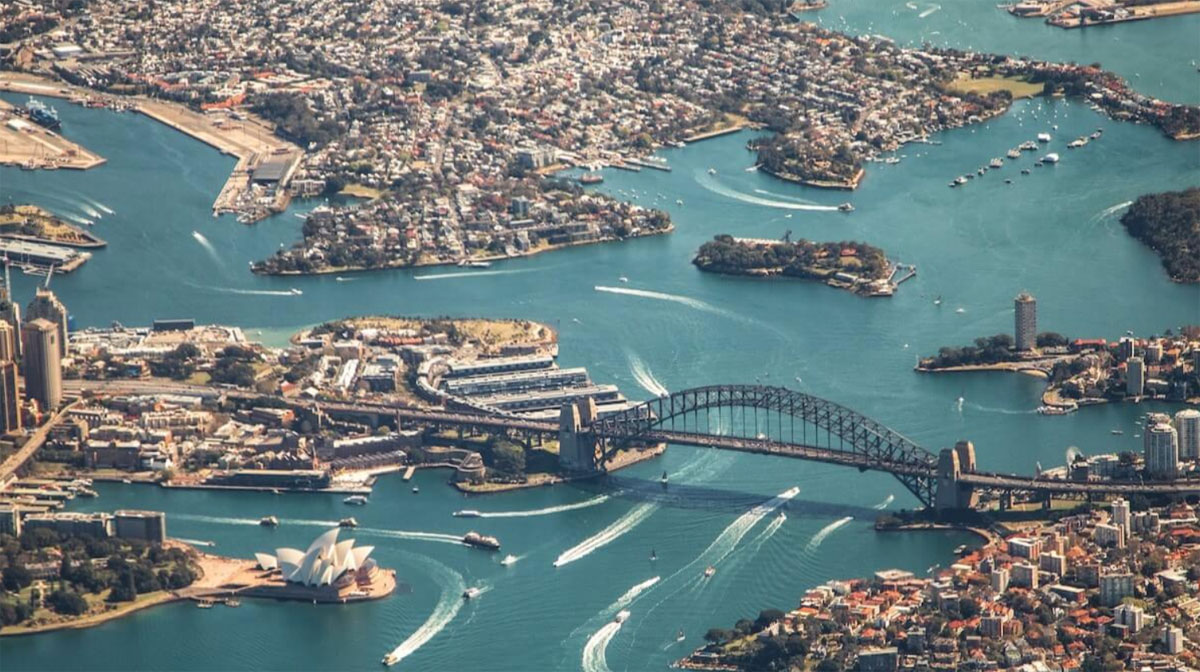
Sydney, New South Wales
The Results of the August 2021 census were made public on 12th July 2022, and revealed that Australia has become a majority migrant nation, as the census data shows for the first time that more than 50 per cent of residents were born overseas or have an immigrant parent. Last year’s census counted nearly 25.5 million people, including 1 million new residents.
Australia’s 2022-23 Migration Program has been carefully designed to boost the social and economic outcomes that meet Australia’s needs. In fact, the migration programme was first launched in 1945 following the aftermath of World War 2. Given this long history, it is worth understanding how it works. The Australian Immigration Bulletin exists to help explain this in more detail.
As we’ve entered the 6th month of the year, join us for a look at the latest news and developments in the world of Australian Immigration!

We spoke with Antony, a skilled migrant who has been working as an machine operator in the building and construction industry for the last 4 years.
How did you get started?
I initially was working in a different field and made a decision to get into civil construction because there were more jobs readily available.
The first thing you do is get a white card, which is the core course you do with a RTO, or registered training organization, and that is issued by Safe Work Australia. It makes sure that you know the basics of safety on a construction site and building site, so you don’t get hurt or hurt anyone else.
After that, I applied for jobs as a laborer, just to get experience and contacts in the field.
Now I’ve worked my way up into operating machines and driving trucks. I’m licensed to operate excavators and rollers, trucks and other construction equipment.
What are the job trends in building and construction?
Right now, in Australia? It is unbelievable. There’s so much work in this field, we can’t get enough people.
How can migrant candidates be competitive?
In this field, it’s pretty much a level playing field, as long as you have the qualifications to do the job that you want to do.
Anyone can get a basic start as a laborer. And as long as you are hard working and show initiative, you can start to move your way up.
Some companies will help you to get more tickets, or licenses to operate machinery. Others wait for that, but for me personally, I didn’t wait on a company to do things for me. I saved my money and I did more courses and got my own tickets. And you don’t have to worry about money because it’s all tax refundable.

Migration to hit highest level EVER with 715,000 migrants entering Australia!
Australia’s net overseas migration (NOM) level is expected to be 400,000 in 2022-23 and 315,000 in 2023-24.
Pre-pandemic migrant intake gain was around 235,000 per year.
Anyone who has stayed in or has been outside of Australia for more than 12 months is counted in NOM.
It includes both permanent and temporary residents, but tourists and visitors are not counted.
Prime Minister Mr Albanese insisted the government was well prepared to handle the additional intake, noting the figures were still significantly under levels predicted before the COVID-19 pandemic, which saw a halt to overseas arrivals.
“There’s been a pandemic! It meant our borders were closed, it meant people weren’t coming in — what we’ve announced is a comprehensive migration plan.
Minister for Home Affairs Clare O’Neil will implement a sweeping overhaul, providing 2.1 million temporary migrants with pathways to permanent residency.
Last time Australia saw a spike as big as the current forecast was following the Spanish flu and World War I, when net overseas migration (NOM) figures followed a similar pattern.
In 1919, Australia recorded its only negative NOM greater than the one from the COVID-19 pandemic.
It was followed by an equally aggressive hike in the following years, adding up to approximately 3 per cent of the total Australian population at the time.
The latest increase in net overseas migration will account for 1.5 per cent of the total population.

A major review of Australia’s immigration system will aim to make it easier to bring in highly-paid permanent skilled workers through expedited visa processing rules, as the country falls behind in a war for global talent.
The federal government has released a draft Migration Strategy outlining a ‘once in a generation reform’ of Australia’s current migration program. This comes after a review that found the current program having unclear objectives and shortcomings in attracting the most highly skilled migrants and enabling business to efficiently access workers.
While some changes will come into effect from 1 July 2023, it may take some time before we see any significant change.
Over the next two months, the government will undertake consultation with state and territory governments and key stakeholders on the outline of the Migration Strategy and critical policy shifts, with the final strategy to be released later this year.
Although it’s too early to predict precisely what the new migration program will look like, it is pleasing to see a thorough review with consultation being undertaken.

India and Australia have announced a migration deal as they aim to strengthen their economic cooperation.
The announcement came after Indian Prime Minister Narendra Modi met his counterpart Anthony Albanese in Sydney on Wednesday.
The deal aims to “promote the two-way mobility of students, graduates, academic researchers and business people”.
They also discussed regional security amid rising tensions in the region.
India and Australia are part of the four-member Quad group, which also includes Japan and the US.
A scheduled meeting of the group in Sydney was cancelled last week after US President Joe Biden had to return to Washington for debt ceiling talks.
Mr Modi, however, continued his planned visit to Sydney after attending the G7 summit in Japan and travelling to Papua New Guinea.
This is Mr Modi’s first visit to Australia since 2014, and comes two months after Mr Albanese visited India in March.
Negotiations for the migration agreement had been going on for a couple of years. Australia already has a significant number of people who have migrated from India.
According to a statement, the finalized migration agreement will also lead to the creation of a new scheme called MATES (Mobility Arrangement for Talented Early Professionals Scheme), which has been “specifically created for India”.
On Tuesday, the Indian prime minister said the two countries had also discussed increasing cooperation on mining and critical minerals and made progress in establishing an Australia-India Green Hydrogen Taskforce.
India and Australia are also working towards a comprehensive economic cooperation deal for which negotiations began more than a decade ago.
On Tuesday, over 20,000 people from the country’s Indian diaspora had turned up at one of Sydney’s biggest indoor stadiums, where Mr Modi was speaking at a rally.
“The last time I saw someone on this stage was Bruce Springsteen and he did not get the welcome that Prime Minister Modi has got,” Mr Albanese said at the event.
Mr Modi called the Indian community in Australia “a living bridge” between the two countries.
“The relationship between India and Australia is based on mutual trust and respect,” he said.

The government’s first Federal Budget since it was elected in 2022 has revealed that the size and composition of the migration program will continue to focus on skilled migration in 2023-2024.
Announcements included:
Changes that were previously announced were confirmed to start from 1 July 2023, such as the increase in minimum salary requirements for Employer-Sponsored Visa holders (TSMIT) to $70,000 per annum, Temporary Graduate post-study rights to stay and work in Australia for an extra two years, and the International Students working hour cap.

The Budget reinforced the government’s commitment to pivot Australia’s immigration program to a focus on skills and employability. In framing the immigration changes in the Budget, the government has laid the foundation for important structural reform of Australia’s skilled migration program, following on from the release of the Migration Reform Taskforce.
The Budget projects that unemployment will rise marginally from the current rate of 3.5 percent to a still modest 4.25 percent by June 2024, which underscores that labor market shortages will continue for the foreseeable future.
Whilst much focus will be on the increased net overseas migration (NOM) level of 715,000 over the next 2 years, it should be noted that the NOM level will return to a steady 260,000 over the following 3 financial years.
There are measures which are intended to build the scaffolding of a deeper reform of Australia’s migration program, including by increasing visa processing capacity and expanding pathways to permanent residence for temporary skilled sponsored workers.
The government has recognized that there are some immediate labor market gaps which need to be addressed as the wider migration reform measures are progressed. While the aged care and disability support sector has grown, attracting and retaining workers has been challenging. Only around half of people who enroll in a relevant vocational course end up employed in the sector. The government cites that about 60 per cent of the aged care and disability support workforce have been working in their occupation for less than 3 years. Attrition rates are particularly high for young people and are lower for older women.
The announcement to introduce uncapped working hours for international students employed in the aged care sector until 31 December 2023 to assist with increased demand is an appropriate short-term response to meeting the labor demands of an industry sector in need of immediate assistance.
The measure to grant an extra two years of post-study work rights to international higher education graduates of Australian institutions with eligible qualifications will strengthen the pipeline of skilled labor. It will widen the pool of talent already in Australia to fill roles not limited to highly skilled positions.
The re-scoping of the Skills Assessment Pilots to provide migrants in Australia with fast‑tracked skills assessments, free employability assessments, and access to further training to improve their employment prospects is an important measure to simplify the migration program. It also flags the government’s intention to ensure that foreign talent is appropriately targeted and is aligned to Australia’s evolving skills needs.

If you are interested in applying for a general skilled migration visa to Australia, it is important to have a good understanding of the skilled visa options and how the migration points test works, so that you can maximize your chances of being eligible to apply for a skilled visa.
A general skilled migration visa is an option available to skilled workers who are seeking to qualify for a skilled visa independently, or under a state or family sponsorship. It is an alternative to an employer sponsored visa.
One of the key criteria to qualify for a general skilled migration visa is the points test (a criterion that does not apply to employer sponsored visas). This is often the most challenging aspect for prospective skilled visa applicants to overcome when seeking an invitation to apply for the relevant skilled visa.
If you are considering applying for a general skilled migration program visa, an important concept to understand is the Expression Of Interest (EOI).
If you are considering applying for a general skilled migration visa, it is important to be aware that for certain visas in this visa class, you will first be required to lodge an EOI with the Department of Home Affairs (the Department) through Skill Select. The EOI is not a visa application, but rather, it is the process by which you can express your interest in applying for the relevant skilled visa (It’s important to note, that there is NO fee to submit an EOI).
This requirement applies to the following skilled visa subclasses:
Let’s take a brief look at each of these visas below:
The ‘subclass 189’ is a federal sponsored visa that grants automatic permanent residence in Australia. It is subject to nil visa conditions or obligations. For this reason, it is often considered to be the most flexible of the skilled visa options available.
A subclass 189 points-based visa allows you to live and work in any state or territory permanently.
The ‘subclass 190’ is a state/ territory sponsored permanent residence visa. It is another points-based visa for which invitations are issued throughout each month by individual states and territories. One of the benefits of applying for state nomination is that you will be granted an additional 5 points.
An important aspect to consider, which does not apply to the subclass 189 visa is that there is an added step in the application process. In this case, you must also apply for nomination approval to a state or territory government. Only upon receipt of an invitation from the relevant state or territory to which you apply can you then apply to the Department for the visa itself.
Your obligations as a subclass 190 visa holder are that you must commit to your nominating jurisdiction’s obligations and commit to residing in your nominating State or Territory for two years from visa grant.
The ‘subclass 491’ is also a points-based state/ territory (or family) sponsored visa. It is a regional visa with a term of five years. The Department issues invitations for family sponsored EOI applications only (in invitation rounds). Invitations for state sponsorship are issued by individual states and territories throughout each month. This will grant you an additional 15 points for the nomination.
Being a provisional visa, this means it provides a pathway to permanent residence in Australia with the Subclass 191 Permanent Residence (Skilled Regional) visa, subject to meeting specified requirements.
Be mindful that as a subclass 491 visa holder, you must abide by visa condition 8579, which requires you to live, work and study in a designated regional area of Australia. For migration purposes, most locations of Australia outside of major cities (Sydney, Melbourne, Brisbane, Perth, etc.) are classed as regional areas.
If your EOI is successful, you will receive an invitation to apply for the visa, as specified in the invitation letter. This then enables you to proceed with lodgment of your visa application (provided you meet all other visa lodgment and visa grant requirements).
Please note, the below State and Territory program updates is a general overview only. It does not take into account any of your personal circumstances. You must check the State/Territory information carefully to ensure you can meet all the requirements for nomination.
Australia is currently facing a shortage of skilled migrants to fill workforce demands. In response, states and territories have been easing the conditions of their visa programs to help attract skilled workers from overseas.
Below is the monthly update for some of the State and Territory opportunities available.

Program Status Update
People residing offshore are now eligible to be considered for Northern Territory (NT) nomination. Invitations to apply for Northern Territory nomination will be via the ranking system.
The ‘Northern Territory Offshore Migration Occupation List’ identifies the occupations in current demand in the Northern Territory. This List is important if you want to apply for Northern Territory nomination for either a:
The ‘Northern Territory Offshore Migration Occupation List’ is only applicable for those applying for NT nomination from outside Australia, under the Priority Occupation stream.
Please note: The Northern Territory government has advised that offshore applicants will generally only be offered a Northern Territory nomination for a subclass 491 visa. Subclass 190 nominations will only be offered in exceptional circumstances, such as cases where the applicant has strong connections to the NT.
The NT advises eligible applicants to apply as soon as they meet the eligibility criteria. To receive a nomination from the NT Government, you must:
Before submitting an EOI for The Northern Territory, applicants should check that they meet all eligibility requirements.

Program Status Update
To manage Queensland’s COVID recovery response, applicants currently residing offshore are now able to apply.
Depending on your occupation and situation, there are two state nomination options available for skilled migrants through Queensland.
For Queensland state nomination, prospective applicants must meet the Department of Home Affairs requirements, state-specific occupation requirements and have skills in an occupation that is available on the Queensland Skilled Occupation List.
You may undertake employment once onshore in Queensland through:
Offshore applicants meeting the minimum published requirements can now lodge a Registration of Interest (ROI).
Migration Queensland, the state government agency responsible for skilled visa nomination, has stated they will only accept a brand new EOI submitted on Skill select from 16 August 2022. Updating existing EOI’s submitted prior to 16 August 2022 will not be invited.
The agency also requests all applicants to ensure they have carefully read and understood the new criteria relevant to their stream or pathway, and that they meet the criteria before submitting an Expression of Interest (EOI).
The 2022-23 Skilled Migration Program will be open to both onshore and offshore applicants and provide pathways for skilled workers, graduates, and small business owners.
Before submitting an EOI for Queensland, applicants should check that they meet all eligibility requirements.

Program Status Update
Open to offshore applicants, the program provides skilled migrants with a pathway to permanent residency in Victoria. The skills that successful applicants bring to Victoria benefits employers and the broader Victorian economy.
The program provides two visa pathways.
The Skilled Nominated visa (subclass 190) is a permanent visa for skilled migrants to live and work anywhere in Victoria. The Skilled Work Regional (Provisional) visa (subclass 491) is for skilled migrants to live and work in regional Victoria and provides a pathway to permanent residency through the Permanent Residence (Skilled Regional) visa (subclass 191).
As with previous years, applicants will first need to submit a Registration of Interest (ROI) and then be selected on competitive merit to apply for visa nomination.
Both onshore and offshore applicants are eligible to submit a Registration of Interest (ROI) for both the subclass 190 and subclass 491 visas.
This is a significant change from the 2021-22 Skilled Migration Program, which did not allow applications from individuals overseas. Additionally, the new program is a great opportunity for applicants who work in a variety of occupations, particularly since the 2021-22 program was previously aimed at applicants in science, technology, engineering, mathematics and medicine (STEMM).
If you submitted a ROI during the 2021-22 program, you must submit a new ROI to be selected to apply for the 2022-23 program.
Your ROI will remain in the system for selection until it is withdrawn, selected or the program year ends.
Before submitting an ROI for Victoria, applicants should check that they meet all eligibility requirements.

Program Status Update
People residing offshore are now eligible to be considered for Western Australia (WA) State nomination. Invitations to apply for WA State nomination will be via the ranking system.
The Western Australian Skilled Migration Occupation List identifies the occupations in current demand in Western Australia. This List is important if you want to apply for Western Australia nomination for either a:
Western Australia has increased occupations eligible for skilled migration by roughly 60 per cent for the 2022-23 program. New occupations have been added to both the Western Australian Skilled Migration Occupation List Schedule 1 (WASMOL Schedule 1) as well as the Western Australian Skilled Migration Occupation List Schedule 2 (WASMOL Schedule 2). In total, more than 100 occupations were added, including 46 in the health care sector, bringing the total to 276 occupations.
Some examples of the newly added jobs include:
From 1 July 2022, the WA Government is also temporarily waiving the $200 application fee. Additionally, applicants who apply after this date will no longer need to provide proof of sufficient funds for WA State nomination.
Under the Western Australia Skilled Migration Program 2022-23, the English language requirement has also been reduced for applicants at the Manager and Professional occupation level. Applicants at this level will only need to demonstrate a “competent” proficiency in English (which is a minimum ‘IELTS score of 6’ for each of the 4 categories).
Before submitting an EOI for Western Australia, applicants should check that they meet all eligibility requirements.
With world-class education, healthy job opportunities and strong public health management, WA is a safe place to live, work and study.

Program Status Update
The ACT Critical Skills List identifies the occupations in current demand in the ACT. This List is important if you want to apply for ACT nomination for either a:
The ACT Government will update this list every four months to make sure that the ACT Skilled Migration Program adapts and responds to the evolving critical skills needs of the ACT economy.
The Canberra Matrix is weighted to ensure that applicants who will make a positive economic contribution to the Territory and/or have demonstrated a genuine commitment to the ACT are more likely to be ranked and invited to apply for ACT nomination.
*ACT nomination does not guarantee a migration outcome. You must still meet the Department of Home Affairs criteria.
Every month, a certain number of nomination invitations are available (prorated on the annual allocation) to those working in the highest ranked Matrix in each occupation.
You can view the ACT’s most in-demand skills for skilled migration by consulting the ACT Critical Skills List.
Before submitting an EOI for The Australian Capital Territory, applicants should check that they meet all eligibility requirements.
Once you’ve submitted a valid Department of Home Affairs Skill Select EOI, follow the ACT Government Process to apply for ACT nomination.

Program Status Update
To manage South Australia’s COVID recovery response, applicants currently residing offshore are able to apply.
Depending on your occupation and situation, there are two state nomination options available for skilled migrants through South Australia.
For South Australian state nomination, prospective applicants must meet the Department of Home Affairs requirements, state-specific occupation requirements and have skills in an occupation that is available on the South Australian Skilled Occupation List. Offshore applicants meeting the minimum published requirements can now lodge an Expression of Interest (EOI).
There is an enormous range of occupations on South Australia’s Skilled Migration Occupation List in a range of industries – search for your occupation here.
South Australia will increase its nominations of offshore skilled migrants in 2022-23. This is in order to make entry to the South Australian labor market faster, due to urgent skills shortages.
To do this, South Australia will select offshore applicants to apply for state nomination from those who have submitted an Expression of Interest (EOI) through Skill Select. Offshore applicants will not need to lodge a Registration of Interest (ROI) for this year’s program. South Australia will be nominating offshore applicants from over 470 occupations on South Australia’s Skilled Migration Occupation List. To be eligible, ensure all the information in your Skill Select EOI is up to date and you have selected South Australia as your first preferred state or territory to move to in Australia.
South Australia will be assessing candidates on merit by the following factors, within their nominated occupation:
Before submitting an EOI for South Australia, applicants should check that they meet all eligibility requirements.

Program Status Update
Working in Tasmania
The two state nomination options available for skilled migrants through Tasmania are:
The Tasmanian State Nomination Skilled Migration Program supports Tasmanian businesses and increases the state’s working age population. It does this by attracting and retaining migrants with skills genuinely in need by employers, or with the capacity to settle in Tasmania through skilled employment in the long-term, and business activities that will increase employment opportunities.
Tasmania’s skilled migration program is for people wanting to move to the state who have skills that Tasmania need. Skilled migrants are attracted to Tasmania because of the state’s enviable lifestyle, career opportunities, affordable housing, reputable schools and a globally recognized university.
The new Migration Tasmania Application Gateway is now open!
The new Migration Tasmania Application Gateway is now open for registrations of interest (ROI) and applications for skilled visa nomination from Tasmania.
Anyone seeking Tasmanian nomination for a Subclass 190 Skilled Nominated Visa or Subclass 491 Skilled Work Regional Visa must now first register in the Migration Tasmania Application Gateway .
Before submitting an ROI for Tasmania, applicants should check that they meet all eligibility requirements for either;

Program Status Update
The New South Wales government has invited applications from offshore migrants under the following nomination streams:
The NSW State Government announced that offshore applicants skilled in certain ANZSCO unit groups are still eligible for NSW nomination.
*Please note: Invitation rounds occur frequently throughout the financial year with no set date.
NSW invites and nominates Skill Select EOIs at the ANZSCO unit group level. To be eligible for NSW nomination (for either Subclass 190 or Subclass 491) you must be skilled in an occupation that both:
It is important to note that not all occupations within ANZSCO unit groups are eligible for the respective visa. It is the responsibility of the prospective migrant to ensure their occupation is eligible for the visa before obtaining a skills assessment.
For the 2022-23 financial year, NSW have introduced a new requirement regarding your Skill select EOI. To be eligible for NSW nomination, your Skillselect EOI must be for ONE visa and for NSW only.
This means that if your Skill select EOI has multiple visas and/or multiple states selected (this includes selecting ‘ANY’), your Skill select EOI will not be considered for NSW nomination.
The skills lists for 2022-23 are available on the Investment NSW website. Additional ANZSCO unit groups will not be added this financial year, however, the skills lists are reviewed annually.
For a further explanation of how the skills list works, see the Common questions about skilled visas page on the NSW Government website.
Before submitting an EOI for New South Wales, applicants should check that they meet all eligibility requirements for either;

Australia is likely to avoid a recession due to the strong rebound of overseas migration, according to the chief economist of the central borrowing and financing authority of New South Wales TCorp.
“The prospects for Australians to have a soft landing are greater and one of the key reasons for that is the return of overseas migration. Particularly over the last six months, that’s rebounded very strongly,” TCorp’s chief economist Brian Redican said.
Overseas migrants grew by 171,000 people in the 2022 financial year, a significant jump from the net loss of 85,000 people the year before according to data from the Australia Bureau of Statistics.
While the RBA is expected to increase rates by another two to three times this year with significant impact on the housing market, building construction and consumer spending, “given that tailwind from the return of overseas migrants, that’s the main reason why we’re not forecasting recession for Australia”, he says.
Wage outlook key for the Reserve Bank of Australia (RBA)
The RBA’s monetary policy outlook will revolve around the outlook for wages growth as Australia has lagged behind the hefty salary increases in other economies, particularly in the US and the UK.
“[The RBA] tightening cycle has to be strong enough to prevent wages growth from leading up, whereas in the US, they have to weaken the labor market sufficiently to get wages growth down. So I think the US Fed has got a much harder job compared to the RBA,” he says, explaining the rationale for a potential rate cut by the RBA later this year. TCorp is forecasting wage growth in Australia to hit 3.5 per cent.
“If they don’t see a rapid acceleration of wages growth by the end of the year and housing is weaker and consumer spending is weaker, then they do actually have the opportunity to cut interest rates.”
Hard landing for the US
In an article titled ‘9 things to watch’ published on Monday, Redican said the US is likely to experience a hard landing as the aggressive rate increase by the US Federal Reserve Bank will take a longer time to affect the housing market, construction, spending and employment. “The magnitude of the increase in rates, however, does suggest that the impact becomes apparent, it will be sizeable,” he said in the article.
However, the US will emerge from recession more quickly than from the Global Financial Crisis as the US economy does not appear to have the same financial imbalances that were present before the GFC.
Redican questions whether central banks should respond to future inflationary surges by aggressively raising interest rates, given households will have weakened balance sheets from the loss of real wages and higher borrowing costs.
“Another option for central banks is to actually keep the level of interest rates higher than they’ve done in the past, [and] have a bit more confidence that they’re not overheating the economy when these adverse supply shocks in the economy there,” he says.
“Any change in monetary policy at that stage can be more modest. They won’t have to raise rates by four percentage points, they might just have to raise rates by one percentage point or one-and-a half percentage points because the level of rate is already at a more normal level.”

Aged care providers will be able to access priority visa processing to help fill growing workforce gaps, as the Albanese government implements the first step in a new model for skilled workers in the sector.
Immigration Minister Andrew Giles announced on Monday the first aged care labor agreement with private provider Curtin Heritage in Perth. It is set to deliver 570 staff over five years, after a memorandum of understanding signed with the United Workers Union.
The new fast track for foreign workers is in response to crippling shortages in low-paid care sectors, with 5 per cent of aged care facilities unable to find enough staff to meet Labor’s pledge to have a registered nurse in each home 24/7.
Last month’s release of an immigration system review by former public service chief Martin Parkinson recommended creating pathways to bring in low-paid care sector workers, with monitoring because of the potential for exploitation.
It said Australia lacked an explicit migration policy focusing on lower-paid workers and that the country had “piecemeal approach that is not meeting our needs or protecting vulnerable migrant workers”.
Curtin will be given access to priority visa processing and a two-year pathway to permanent residency for prospective workers.
Aged care providers that sign an agreement with their relevant trade union would have access to the new scheme, designed to increase recruitment and retention in the critical workforce, the minister said.
“This labor agreement is proof that collaboration between unions, business and governments is fundamental to addressing key skills shortages in the short term,” he said in a statement.
“The swift processing of this labor agreement reaffirms the government’s commitment to addressing skill shortages within the care sector.”
“The delivery of this labor agreement is only possible because of the Albanese government’s commitment to slash the visa backlog of almost one million and get our migration system working again in the interest of all Australians.”
The agreement would help ensure 200 minutes of care per day for aged care residents by October, which is in line with the recent royal commission’s recommendations, said Carolyn Smith, the United Workers Union national director for aged care, and state secretary for Western Australia.
“We have always said in relation to visa workers, it’s no good introducing new workers who face the same workplace issues of low pay and too much work as those currently facing existing workers and I am hopeful the scheme will prevent this exploitation,” Ms Smith said.
Curtin Heritage Living managing director David Cox described the new arrangement as a way to access a more diverse and skilled workers to provide the best possible care.
“From an industry perspective, we believe this agreement is a positive step toward addressing a critical shortage of skilled workers and will hopefully offer some relief to other aged care service providers,” he said.
The Productivity Commission has also previously recommended a pilot visa program for workers in industries like disability and aged care, warning shortages of labor are “endemic” and are affecting the quality of care for vulnerable people.
“It has proven particularly difficult to attract workers in aged care, an issue that is likely to intensify given policy initiatives to raise staff-to-resident ratios, accompanied by the pressures of an ageing population,” the commission said.
In the first major review of the immigration system since the 1990s, the government’s response to the Parkinson review will involve the dumping of requirements for employers to advertise jobs locally before hiring an overseas migrant.

An integral part of Pacific culture is providing a helping hand wherever it is needed in the village.
So after moving to Stawell in 2020, Junior Issachar made a conscious effort to get involved with his new community.
“Our passion is to be a blessing … and put a smile on someone’s face,” he said.
Mr Issachar is one of a growing number of workers from Vanuatu who have moved to the small town in regional Victoria under the federal government’s Pacific Australia Labor Mobility (PALM) scheme.
And when they are not working at the town’s meatworks, they can often be found out in the community visiting the elderly and people living with disabilities.
Mr Issachar said the volunteer work could involve anything from moving furniture to gardening and yard work to just simple chores around the house.
“I go where they are in their houses or properties, and just give them a helping hand,” he said.
Mr Issachar said giving back also helped create a sense of camaraderie for the workers while being a long way from home.
“It’s about looking after each other, especially in tough times when our family is not around,” Mr Issachar said.
“We’ve just received another 19 [people] … the new recruitment from Vanuatu … and that keeps a positive vibe for our group as well.”
‘It is a big thing’, Stawell’s Mayor Kevin Erwin said the PALM scheme participants’ community work and sacrifice had not gone unnoticed.
“It is a big thing and I really give them all credit to come out here, they work hard … they fit in the community nicely,” he said.
“And people appreciate the work that they do within the community.”

On the 9th May 2023, the Australian Government revealed the new federal budget for 2023-24. Below, we take a look at the five most important takeaways from the federal budget 2023 for international students in Australia.
1. No working hour cap for international students in the aged care sector in 2023
Earlier this year, we learned that the working hour limit for international students would be reinstated at a higher cap of 48 hours per fortnight as of 1 July 2023.
However, if you’re an international student working in the aged care sector, this doesn’t apply to you.
The federal budget 2023 has revealed that international students working in aged care will be exempt from the working hour restriction for the rest of the year. This means they can work unlimited hours until 31 December 2023.
It wasn’t specified if the 48-hour-per-fortnight limit would apply to international students working in aged care from 1 January 2024.
2. Increased visa application costs
The budget has also set out an increase in visa application charges (VACs) for a range of visas, including Student (subclass 500) visas, Visitor (subclass 600) visas and Working Holiday/Work and Holiday (subclasses 417 and 462) visas.
From 1 July 2023, the costs for these visa applications will be:
3. Cost of living relief
The government responded with a $14.6 billion cost-of-living relief package.
While the package includes several measures, the most relevant to international students in Australia include the promise to build more homes and to keep wages moving, including boosting wages for low-paid workers and many workers in the aged care sector.
4. Skilled migration updates
The federal budget has also listed some significant changes to Australia’s migration system, particularly its skilled migration program.
According to the budget documents, this will involve providing faster pathways to permanent residency for skilled graduates. To do this, the government plans to create simpler pathways for international students going on to graduate visas. Applicants will therefore spend less time on bridging visas waiting for their substantive visas to be processed.
Post-study work rights will also be extended for many international graduates from 1 July 2023, specifically those qualified in in-demand sectors.
5. Investment in Australia’s healthcare system
Health care and social assistance is Australia’s largest employing sector. As such, it’s a top investment priority in the federal budget 2023.
One of these investments includes $31.6 million over two years for improved training arrangements for international medical students, specifically those working in rural and remote areas.

We know as an international student moving to Australia to study you must be excited! We also understand it might be a little daunting. To help make this process as smooth as possible, here is some essential advice on topics that every new international student should be aware of.
Accommodation:
Finding the right accommodation is crucial for a comfortable stay in Australia. Whether you choose private rental or shared living, make sure to pay attention to details on the lease/rental agreement. You can expect to pay anywhere between $150-$700 per week depending on your preferences.
Banking in Australia:
To open a bank account in Australia, you will need your passport, proof of address in Australia, and proof of enrolment, such as a student ID card. Having an Australian bank account is an easy way to pay fees and receive wages from your employer.
Public Transport:
The trains run regularly between certain cities and within the local suburbs, and there is also regular bus services. To travel on public transport (buses and trains) you will need an Opal Card, which can be purchased at major supermarkets like IGA, Woolworths, and Coles.
Employment:
International students are permitted to work up to 48 hours per fortnight during a semester and unlimited hours during semester breaks. This information was correct as of April 2023.
To ensure you are taxed at the correct tax rate, it’s important to obtain a Tax File Number (TFN). You should also consider making contributions to superannuation, which is a type of savings. When you leave Australia, you can claim back your superannuation contributions.
The Fair Work Ombudsman can help you prepare for your new job. It offers a range of free resources and tools, including a Guide to Starting a New Job and the ‘Starting a New Job’ online course
Fairwork Ombudsman:
If you experience any forms of worker exploitation or underpaid employment, report it to the Fairwork Ombudsman (FWO). They are there to help you with any work-related issue.
Connect Your Phone:
When you arrive in Australia, consider buying a local SIM card with a prepaid or monthly plan. Be sure to pay attention to the plan contract if you choose a monthly plan. To get a monthly plan, you will need to provide proof of an Australian bank account, student visa details, and a passport.
We hope this advice will help new international students who are starting their journey in Australia.

Indian Prime Minister Narendra Modi was welcomed in Sydney by around 20,000 cheering fans, many chanting “Modi”. Prime Minister Anthony Albanese says “Australia and India will enjoy an even deeper friendship under new agreements signed today.” Sydney, NSW. May 2023

Australian Jason Moloney has won the WBO bantamweight title, beating Vincent Astrola bio by majority decision to claim a major world title. Stockton Arena. May 2023


Isabella Nichols and Cole Houshm and win GWM Sydney Surf Pro! Sydney, NSW. May 2023
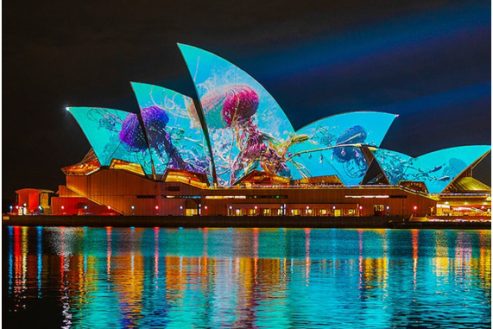
Showcasing the soul of our city, ‘Vivid Sydney’ fused mesmerizing art displays and 3D light projections with exhilarating live music performances, thought-provoking debates and deep-dive discussions from some of the world’s brightest minds! Sydney, NSW. May 2023

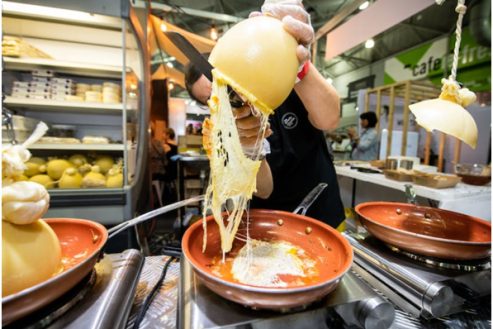


A colorful week-long aerial spectacle took off over Northam as the much-anticipated National Ballooning Championship returned to Western Australia for the first time in six years! Northam, WA. May 2023
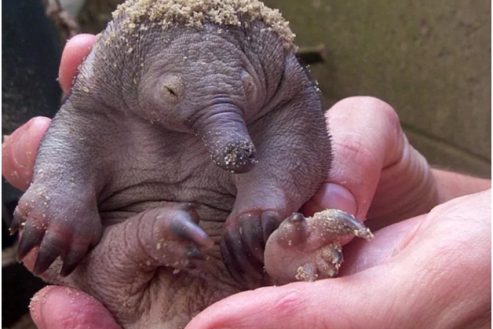
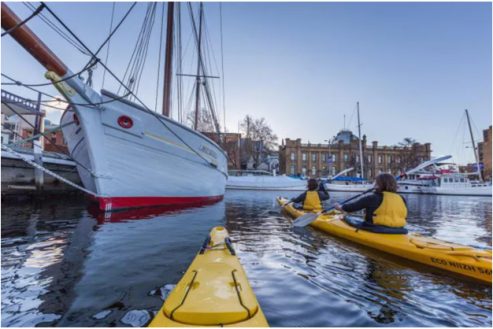
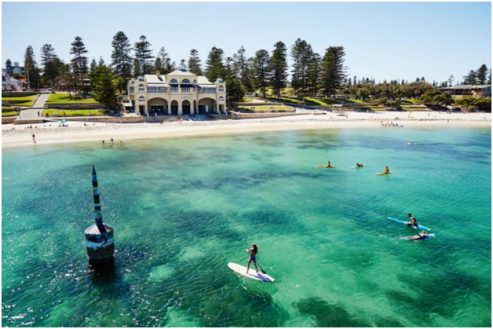
This Bulletin and its contents is for general information purposes only and should not be used as a substitute for consultation with professional advisors.
As legislation and travel requirements are constantly changing, we strongly recommend obtaining advice on your individual situation from a Registered Migration Agent. Please click here to book a consultation with one of our Registered Australian Migration Agents, located in Australia.






You can manage your membership and billing method by clicking here
Terms of Service
Privacy Policy
Copyright © 2025 Office of Immigration Australia, a private company registered in Australia. All Rights Reserved.